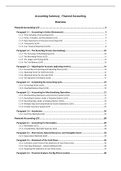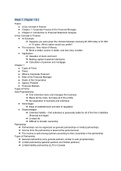Summary
Summary Accounting (Financial part) IBA
- Course
- Institution
- Book
Summary for the course Accounting International Business Administration at VU Amsterdam, a first-year course. This summary covers the first part of the course, which is financial accounting. The summary is equipped with several accessibilities such as the 'GO BACK BUTTON' that helps you to go th...
[Show more]




